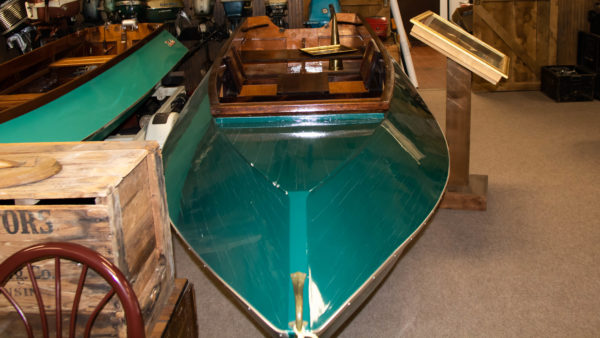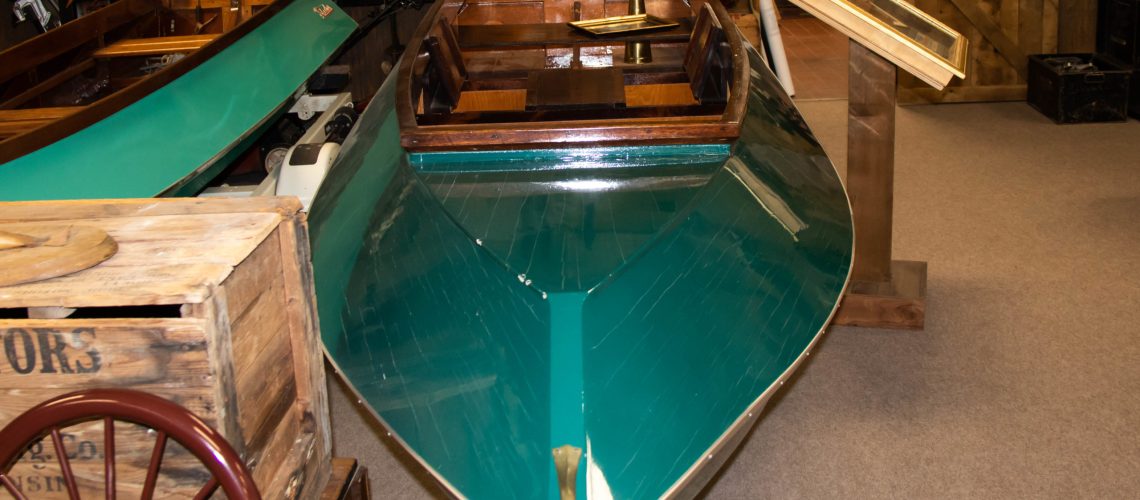
The world-class fishing that Branson’s tri-lakes, Table Rock Lake, Lake Taneycomo, and Bull Shoals Lake, offer attracts anglers from all over the world. The History of Fishing Museum provides a unique opportunity for fishermen and anyone interested in history to take an entertaining and educational trip through the evolution of fishing history.
Bill Bramsch is the museum’s curator, a font of information on the museum’s thousands of artifacts, and its “as available” tour guide. His passion and ability to communicate bring museums artifacts to “life” excitingly and enjoyably.
The History of Fishing Museum is the most extensive collection of antique fishing lures, rods, reels, boats, and boats collected by a single man and wife. Karl and Beverly White. The museum’s collection has over 40,000 artifacts and has a value of $5 million. White started collecting at age eight by purchasing his first lure, James Heddon’s “Crazy Crawler.” It was the priciest bait to make at the time, and decades later is still part of the collection.
Bill Bramsch, the museum’s curator, said, “The exhibits include lures, flies, rods, reels, boats, boats, and everything else having to do with game fishing. Its artifacts cover a timeline running from pre-historic times up to the 1970s. This includes pre-historic, Native American, pre-colonial, and fishing artifacts through the 1970s. Where else can you experience a collection of these artifacts, valued at more than $5 million, in one place?
Bramsch says that the collection is the world’s most complete and varied fishing tackle and paraphernalia collection. Many collectors concentrate on one area, such as bass fishing, or a single fishing style, such as fly fishing. The Whites’ comprehensive collection is varied and detailed, having everything relating to classic tackle and fishing paraphernalia.
One of the many exhibits in the museum is one of only four known Snyder Baitcasting Reels. Created by George Snyder in Paris, Kentucky, in the 1840s, the Snyder Reel is the world’s first precision free-running baitcasting reel. The reel’s current value is more than $150,000.
Another is the first wooden plug, the Comstock Flying Helgramite, created by Edward Comstock in 1883. This lure became famous when Comstock sued E.F. Pflueger for design infringement because his lure was so similar and won. The Comstock Flying Helgramitebait on exhibition in the museum is the actual bait used in the court case and has a value of $12,000.
Bass fisherman will hardly believe their eyes when they compare the sleek modern boats they fish from today with the first bass boat manufactured in the United States. Holmes Thurman built it in 1948. The 13-foot boat is made of molded marine plywood and has a wooden live well that has to be filled manually. It was called a “Skeeter,” because its long needle-shaped nose resembled a mosquito. The museum has that boat, “Skeeter 1,” the first in a long line of high-quality bass boats, produced by what is today “Skeeter Performance Fishing Boats.”
The History of Fishing Museum is located at 225 N. Wildwood Dr in Branson. Its hours of operation are Mon-Sat 10 AM to 6 PM and Sundays from 12 PM to 6 PM. For further information, please contact the museum by calling 1-417-239-FISH (3474) or visit its website at http://www.historyoffishingmuseum.org/.

